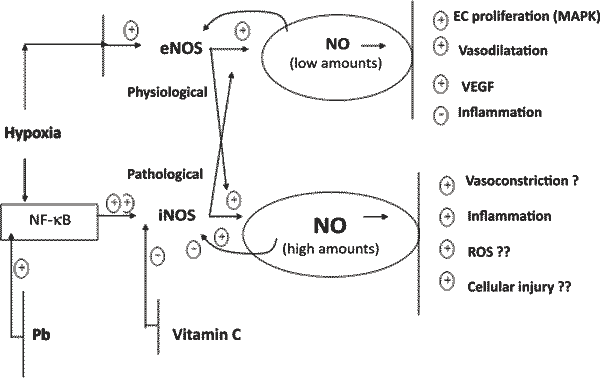Abstract
Hypoxia inducible factor-1α is an important transcription factor which is necessary for hypoxic gene expression that responds to changes in oxygen level in cell. HIF-1α remained stable and active in the occurance of Fe2+ and oxygen but it is depleted through the Von Hippel Lindau protein (pVHL) or Ubiquitin or Proteosome pathway. Restriction of oxygen induces inhibition of prolyl hydroxylase and accumulation of HIF-1α which in turn translocates to the nucleus to form a heterodimer with HIF-1β. Chronic hypoxia stimulates both KLF6 and NF-κB gene expressions and it reduces KLF4 which further enhances8 iNOS expression. Over expression of iNOS leads to rise in NO production and increase formation of peroxynitrite (ONOO–). This event will lead to swelling of mitochondria and release cytochrome. Among the various heavy metals lead (Pb) is found to be a potent inducer of oxidative free radicals along with suppressor of cellular antioxidant defense system. The mechanism involves destruction of glutathione or inhibition of sulfhydryl dependent enzymes or altering intracellular oxidant and antioxidant balance which greatly affect cellular integrities. Heavy metals like lead (Pb), nickel (Ni) and cobalt (Co) can activate the hypoxia signaling pathways through Akt/ERK1/2 and induce HIF-1α accumulation.
This review analyzed the significant impact of sustained hypoxia in physiological system alone or along with simultaneous exposure of lead and possible protective role of vitamin C as antioxidant in rats.
Keywords: HIF-1α, hypoxia, NOS, oxidative stress, Pb, VEGF, vitamin C.





























